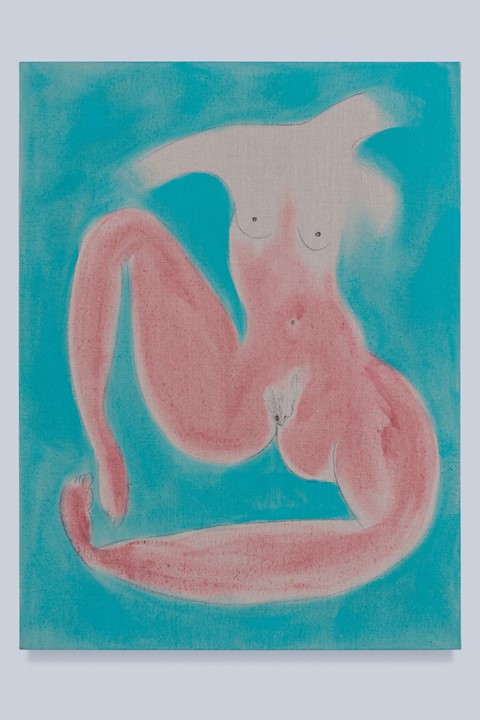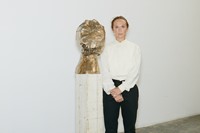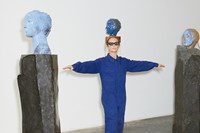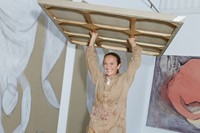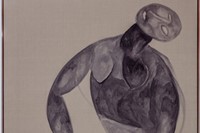In conversation with Belle Hutton, the legendary artist opens up about her “transcendental” performance art, fasting in the desert, and her new exhibition
For over 25 years, performances have been integral to Vanessa Beecroft’s practice. The artist, who grew up in Italy and is based in LA, also works in sculpture, painting and photography, much of which looks to the performance art she has long honed. A Beecroft show – since the first in the early 90s, each has been titled VB1, VB2, and on – is recognisable for some key signatures: a group of women stand in a stark formation, sometimes all nude and other times clothed in uniform or vaguely matching outfits. Beecroft mines her own life and experiences to create these idiosyncratic performances, which speak to the wider issues and societal expectations women face.
Over the decades, such topics have shifted, and Beecroft’s approach has remained steadfastly personal. “It is the only way I know how to work,” she writes to AnOther over email. “It’s probably cathartic but the work has a life of its own, so it doesn’t really relate to me once it is out in the world.” For these studies of the female body and mind, as well as her works in painting and sculpture, Beecroft also looks to the Renaissance and classical art history traditions of her home country. The critical success of her compelling and unique performances have seen Beecroft take on some high-profile collaborations, with fashion brands like Tom Ford, Valentino and Tod’s. Perhaps most famously – and controversially – she has also worked with global stars like Kanye West.
A new virtual exhibition from Simon de Pury, Los Angeles, presents a selection of Beecroft’s arresting sculptures and paintings, both of which relate to her performance pieces. The show’s colourful paintings and figurative sculptures all depict women crafted from her imagination. “I don’t know who they are,” she says. “They materialise the performances and translate them into objects.” All created in recent years – the paintings over a period in 2019 in which she was “locked in the studio” – the pieces relate to performances from throughout Beecroft’s three-decade-long career. The works will be shown within her studio and new works added as the exhibition continues, presenting a dialogue between the studio and artworks, and the processes of making and exhibiting. Here, Beecroft shares more about the new exhibition.
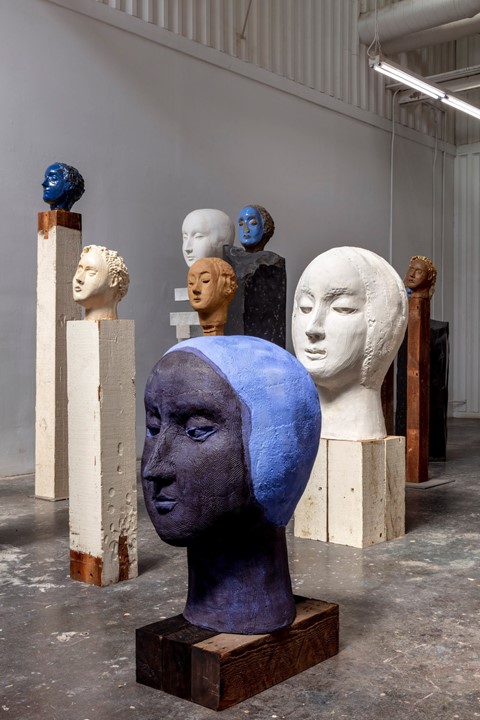
AnOther Magazine: How did this exhibition come about, and how long has it been in the works?
Vanessa Beecroft: In May 2021, Ziggi Golding reconnected me with Simon de Pury, a longtime acquaintance. I met Simon probably in 2000 at Cipriani uptown with Helmut Newton. Helmut was going to photograph me for US Vogue, and Simon made this epic meeting possible. The works were produced between 2016 and 2017 for the occasion of the opening of Federico Spadoni’s Pio Pico in East LA. Federico, my husband, decided to open a gallery and to show my work as an extension of an artist’s practice. He helped develop the production of many clay heads, both in LA and Guadalajara at José Noé Suro’s ceramic factory. The works were conceived and first produced then. The exhibition contained a vast collection of ceramic heads, ceramic drawings on slabs, ceramic large classical bodies, and a monumental mural. When Simon recently saw the group of heads, he told me he wanted to show them. I produced a new body of work inspired by our conversation.
AM: Could you introduce the works in the exhibition?
VB: The works are a group of heads in ceramic and plaster. Some are painted with oil, some are glazes, some are left raw, some are covered with gold leaves. In the process of recreating the heads from 2017, I reinterpreted the shapes and colours. The origin of all the work is a form of sublimation of the classical Italian tradition I grew up with. It is also an extension of my work with the performances, where the heads and faces are grouped together and where they multiply, sometimes looking the same yet being different, as part of a master portrait.
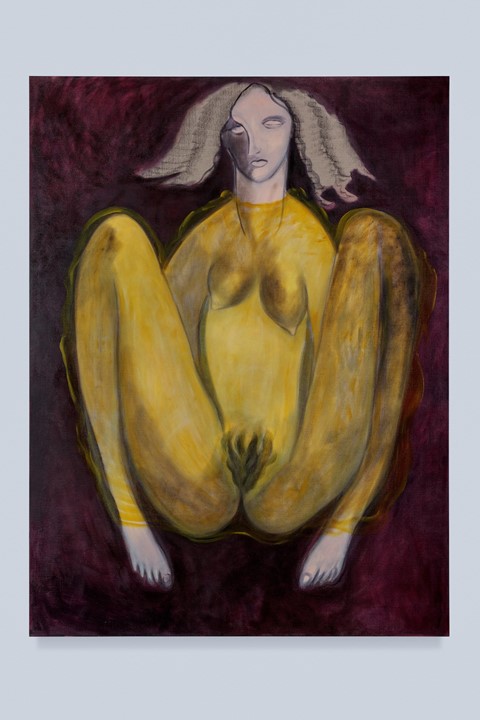
AM: In what ways are these works connected to your performances?
VB: The performances present groups of women that seem related to each other. These heads were molded by memory, yet they resemble each other. They both probably come from a source that is very close to me, and this is what connects them. The performances that connect the most with this group of works are the performances in which I have combined prototypes in plaster of live casts from my models and the ones in which fragments of these live casts were reproduced in marble. Also, performances in which portraiture was a theme, with a colour scheme of dark, earthy tones like in ceramics. Or performances where a religious theme, a transcendental quality, was expressed. A group of performances at first all different from each other.
AM: The idea of these works being exhibited throughout your studio, marking a journey between artworks and process, is so interesting. What moved you to do this? And why is the relationship between the works and the space around them particularly important?
VB: The fact that the process was so close to the exhibition made it possible to produce the works a few hours before photography, which is an ideal situation. The whole trauma of transportation, installation, and separation from the works is eliminated. I was moved to do this by the specifics of the virtual exhibition. The space is the same space where the works originated.

AM: What sparked the period of painting “locked in your studio” in 2019?
VB: Many years of restraint from painting and having a studio life due to personal and professional obligations. In 2019, following a series of fastings in the desert and some critical changes in my personal life, I decided to take the time and expiate the guilt I felt I had – in the studio, alone, cleansing with painting. It was hard in the summer being locked in Boyle Heights with mosquitoes and extreme heat while everyone else was on a beach or in Europe. I was listening to James Baldwin, sleeping on my office couch, and just spent days there. In my current life, I don’t have time to dedicate to something unless I fully immerse myself in it, and that is what I did.
AM: Collaboration has formed a significant part of your recent career. What do you enjoy, or find most valuable, about those collaborative relationships? How do they impact your personal work?
VB: They impact it since there is an interaction with a major mind, and a collaborative relationship, which is the ideal form of friendship. They are special gifts you find along the way. Fashion brands are complicated and dialectical relationships.
Vanessa Beecroft’s online exhibition launches on de-pury.com on August 25. The exhibition can also be visited by appointment in Los Angeles.
